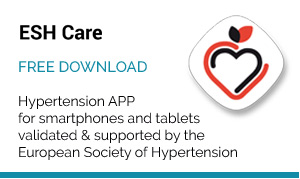Hypertension 2008
The adverse effects of hypertension are determined by the average level of blood pressure (BP) over long periods of time. It has always been assumed that clinic-measured BP reflects BP over time, yet Dr. Thomas Pickering (Director of Integrative and Behavioral Cardiology Program of the Cardiovascular Institute at Mount Sinai School of Medicine, New York, USA )said there are systematic differences between clinic BP and long-term BP levels – and these differences have serious clinical implications.
The small number of readings that can be taken in clinic is actually a poor estimate of average levels given that BP shows spontaneous variability. Measurements taken at home, at work, during sleep, and in the clinic can vary widely, producing systematic errors between clinic BP and average BP that depend on a number of factors, including psychological ones.
When screening for hypertension in the general population, clinic BP is measured and patients with normal BP undergo no further evaluation and, if the measurement is high, further evaluation is likely – often, a second later BP measurement done in clinic. This approach misses two sizable groups of patients: those who have white-coat hypertension and those with masked hypertension.
It is generally accepted that those individuals with isolated increased BP in the clinic setting (the white-coat hypertensives) are at relatively low risk of cardiovascular morbidity, but that is likely not the case for masked hypertension because they are likely truly hypertensive.
The first study to look at this issue was done by Dr. Pickering and colleagues and showed that masked hypertension is associated with a higher left ventricular mass index (LVMI) and more carotid plaque than true normotensives. (1) Subsequently, investigators used PAMELA study data to confirm LVMI is higher in masked hypertensives than in true normotensives and similar to true hypertensives. (2)
Also, patient prognosis appears to be worse in the presence of masked hypertension. In an analysis of three ambulatory BP (ABP) databases, investigators evaluated data from 1,272 individuals with normal clinic BPs, 376 (29.5%) of whom had high ABP (masked hypertension) and 896 (70.4%) were true normotensives. When comparing the prognosis in these two groups, masked hypertension was an independent predictor of cardiovascular events (HR 2.26; p < 0.009), but age, gender, and clinic BP (systolic or diastolic) were not independent predictors of outcome.
How common is masked hypertension? Dr. Pickering said the data suggest that it occurs in 10% or more of the general population. Using U.S. population data, he said, the traditional clinic view of BP would suggest that 240 million Americans are normotensive and 60 million hypertensive. The implications of white coat and masked hypertension change these numbers considerably. There would be 220 million true normotensives, 20 million with masked hypertension, 12 million with white coat hypertension, and 48 million with what could be considered classic true hypertension. Adding those with masked hypertension to the number with true hypertension puts the number at risk at 68 million. Thus, millions of people in the U.S. alone are having life years stolen by masked hypertension.
Importantly, he added, among older individuals ABP is consistently lower than clinic BP; however, in younger individuals, ABP is consistently higher than clinic BP.
What can be done? Dr. Pickering concluded that since traditional clinic BP measurement misses a significant number of young individuals with high-risk masked hypertension, subjects with high-normal office BP – the group with the largest percentage of individuals with masked hypertension – need to have out-of-office BP screening to identify masked hypertension. Home monitoring, he said, may be the best technique for identifying such subjects.
In a scientific statement published online on May 22, 2008, prior to publication in Hypertension, Dr. Pickering and others, on behalf of several medical organizations including the American Heart Association, issued a call to action on the use and reimbursement for home BP monitoring. (3,4) They present the case that home BP monitoring overcomes many of the limitations of traditional office BP measurement and is both cheaper and easier to perform than ambulatory BP monitoring. Given that this approach has the potential to improve quality of care while reducing costs, the specialty organizations represented by Pickering et al. recommend that home monitors should be reimbursed.
References:
- Liu JE, Roman MJ, Pini R, Schwartz JE, Pickering TG, Devereux RB. Cardiac and arterial target organ damage in adults with elevated ambulatory and normal office blood pressure. Ann Intern Med 1999;131:564-572.
- Sega R, Trocino G, Lanzarotti A, et al. Alterations of cardiac structure in patients with isolated office, ambulatory, or home hypertension: data from the general population (Pressione Arteriose Monitorate E Loro Associazioni [PAMELA] Study). Circulation. 2001;104:1385-92.
- Pickering TG, Miller NH, Ogedegbe G, Krakoff LR, Artinian NT, Goff D. Call to Action on Use and Reimbursement for Home Blood Pressure Monitoring: Executive Summary. A Joint Scientific Statement From the American Heart Association, American Society of Hypertension, and Preventive Cardiovascular Nurses Association. Hypertension 2008 May 22. [Epub ahead of print].
- Pickering TG, Miller NH, Ogedegbe G, Krakoff LR, Artinian NT, Goff D. Call to Action on Use and Reimbursement for Home Blood Pressure Monitoring. A Joint Scientific Statement From the American Heart Association, American Society of Hypertension, and Preventive Cardiovascular Nurses Association. Hypertension 2008 May 22. [Epub ahead of print].






